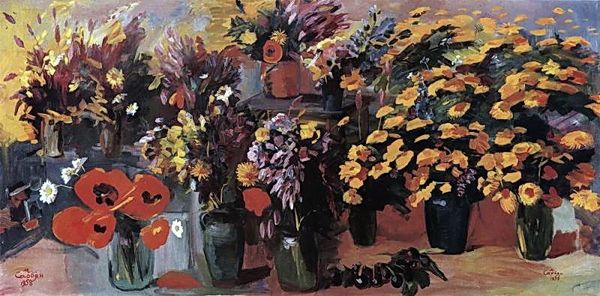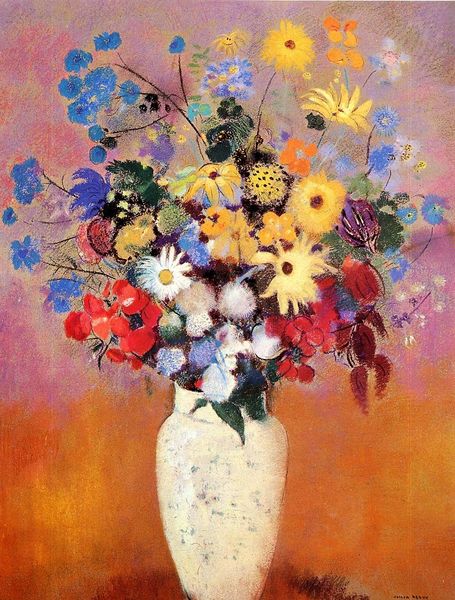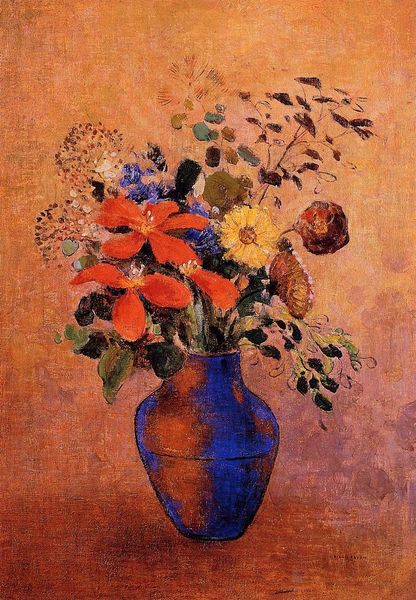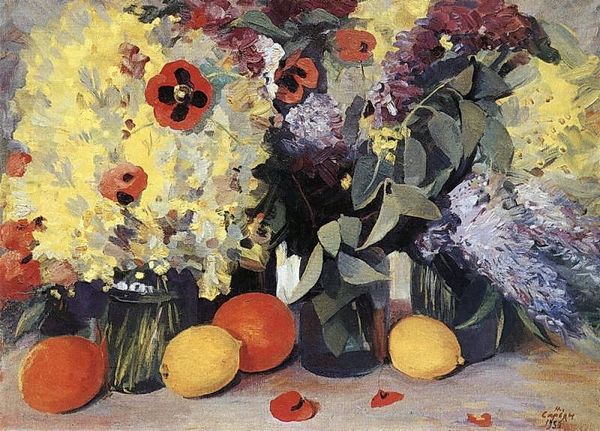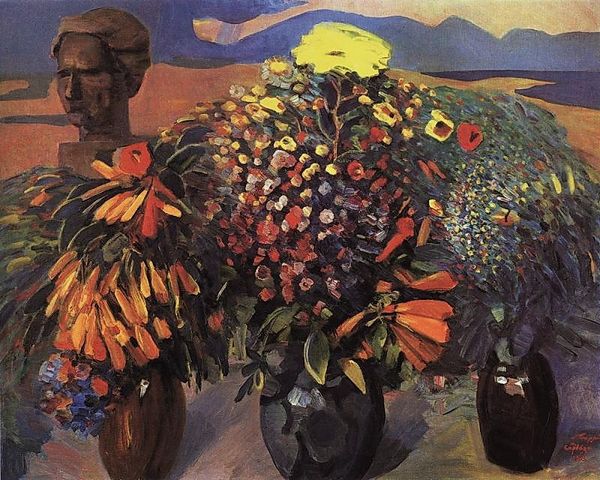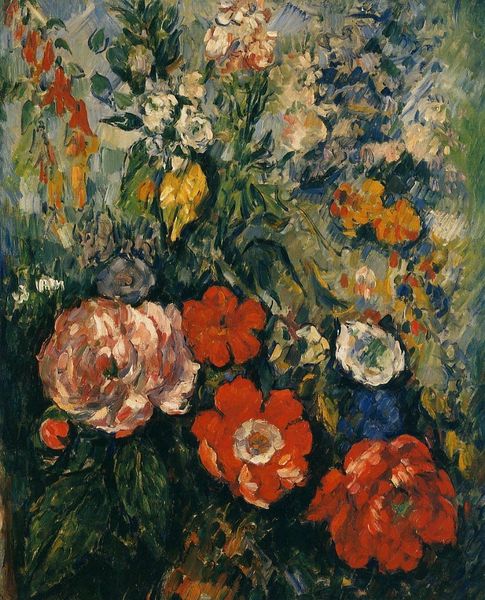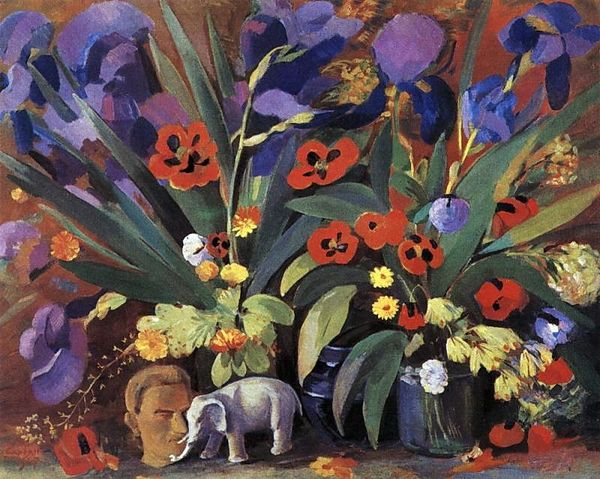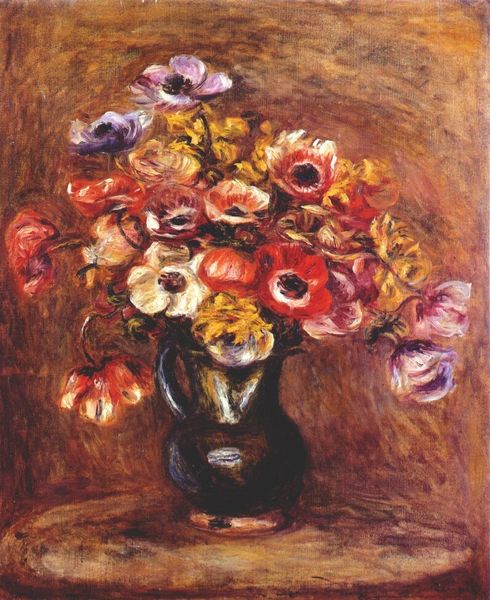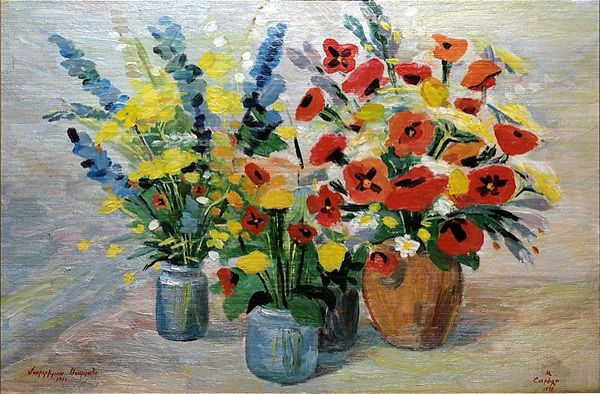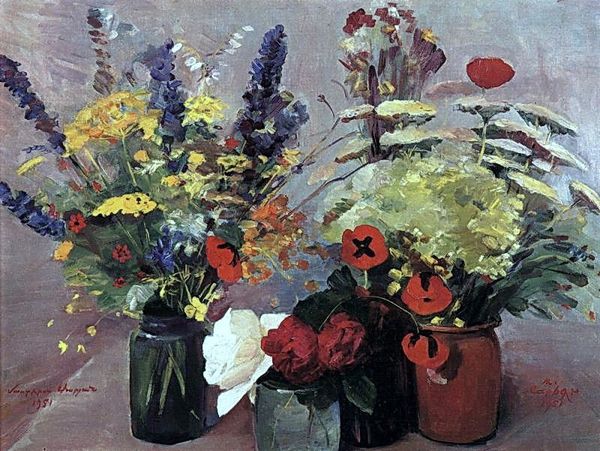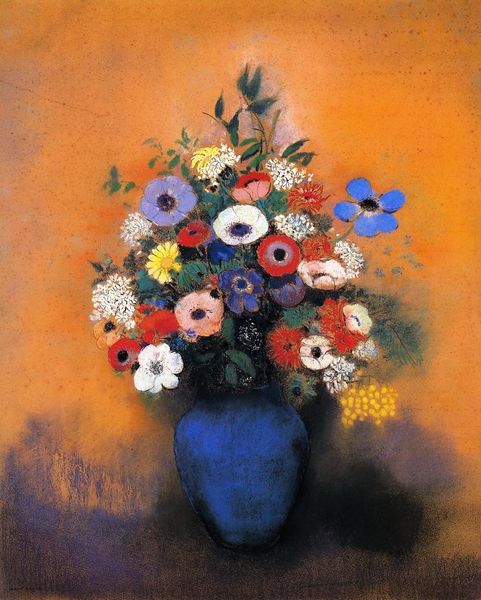
Copyright: Martiros Sarian,Fair Use
Editor: This is Martiros Sarian's "Yellow Flowers," painted in 1944. It’s an oil painting, and the application of paint looks really thick. What jumps out at me is the layering and almost frantic brushwork. How would you interpret this work? Curator: Considering its materiality, let's examine the paint itself: the impasto technique suggests a frantic, almost desperate, attempt to capture vibrancy during wartime, or perhaps a rebellion against the privation of the period through sheer lavishness. How do the thick daubs of oil paint serve as both representation and, simultaneously, material presence? Editor: So you're thinking the materiality actually carries a kind of social weight, pushing against wartime scarcity? Curator: Exactly. What impact does it have that the artist uses expensive, and sometimes imported, materials in this context? Were there ethical concerns, or was this a defiant act of self-expression? Editor: It makes you consider the socio-economic factors underpinning even a seemingly simple still life. Was Sarian deliberately contrasting beauty with the harsh realities of 1944 through material excess? Curator: Precisely. Think also of the labor involved in obtaining those pigments. Someone mined, processed, and traded these materials, connecting this artwork to a network of production and consumption. How might this knowledge affect your viewing? Editor: It definitely shifts my perspective. It makes me realize that even in something as seemingly apolitical as a floral still life, the materials themselves can be powerful conveyors of meaning. Curator: Indeed. By considering the material history, we’ve revealed layers of socio-economic commentary embedded within the artwork's surface. It moves beyond just pretty flowers, doesn’t it? Editor: Absolutely. I see it completely differently now, thank you!
Comments
No comments
Be the first to comment and join the conversation on the ultimate creative platform.

